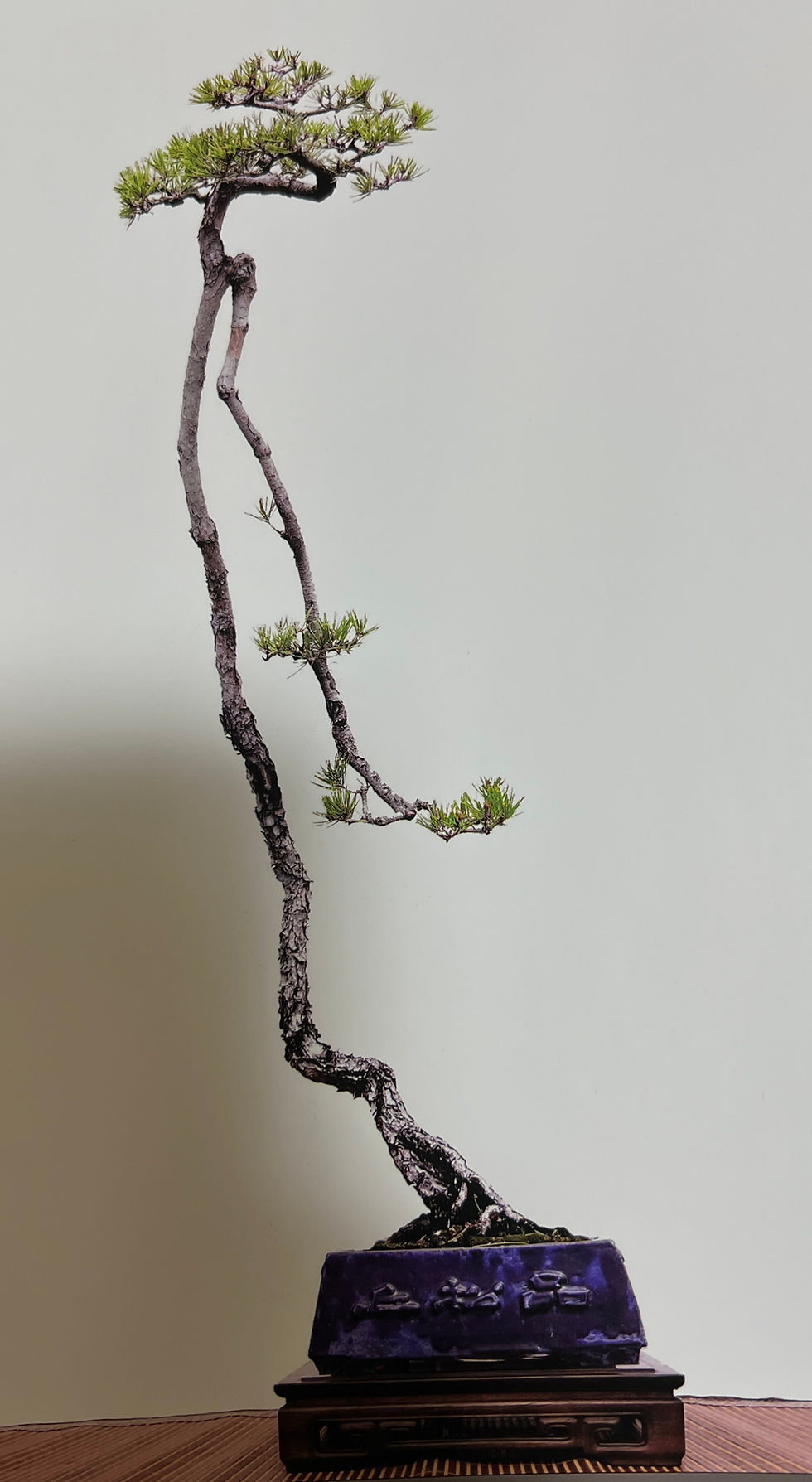Unleashing Creativity: A Deep Dive into the Art of Penjing with Allan Harding
- Vicky Gatt
- Dec 10, 2024
- 3 min read
The School of Bonsai recently hosted an inspiring talk and demonstration by Allan Harding, who delved into the fascinating world of Penjing. Often referred to as “potted scenery” or “landscape in a pot,” Penjing is the ancient Chinese art form that predates bonsai, capturing not just the beauty of individual trees but also the spirit of natural landscapes. Here are some of the key insights and takeaways from Allan’s engaging presentation.
What is Penjing?
Unlike bonsai, which typically emphasises a single tree as a focal point, Penjing often incorporates multiple elements, such as trees, rocks, water, and even miniature figurines.
It often creates a broader, more narrative-driven composition, evoking entire landscapes, and can also focus on single specimens presented with artistic intent.
The Unique Philosophy Behind Penjing
One of the standout lessons from Allan’s talk was the creative freedom in Penjing. Unlike bonsai, which often adheres to strict stylistic guidelines, Penjing allows for more personal expression and storytelling.
"Trees are not always aged to evoke ancientness; instead, they are designed to convey a mood or narrative".
For instance, Allan crafted a “Husband and wife” tree composition, illustrating the emotional depth possible in this art form (image below).
The Regional Diversity of Penjing
Allan emphasised that Penjing varies greatly across China, reflecting the country’s vast geography and cultural richness. Each of the five major schools of Penjing adapts local materials and tree species to suit the natural environment, resulting in styles that are as diverse as the regions themselves.
In contrast, Australian bonsai artists often work towards a unified style, despite the country’s vastness. This is a notable difference: in China, the art of Penjing celebrates regional uniqueness, while in Australia, there’s a tendency towards shared techniques and aesthetics.
Key Characteristics of Penjing Design
Allan highlighted several hallmarks of Penjing, providing tips for creating compelling compositions:
Sparse Branching: Penjing trees typically have fewer branches and foliage compared to bonsai. This draws attention to the trunk’s shape and design.
Incorporation of Rocks and Other Elements: Rocks and plants are often placed together in a single pot, forming cohesive landscapes that may include trees, moss, and stones as integral components.
Unnatural and Abstract Forms: Penjing embraces its man-made origins, often leaning into abstract designs that convey emotion or a sense of place.
Breaking the Rules: A Spirit of Innovation
Penjing’s philosophy emphasises intent over perfection, encouraging creativity and imagination. By focusing on the “worthy characteristics” of the materials, artists refine their work to suit the narrative they wish to tell, rather than adhering to rigid standards.
"One of the perceptions I'm continually up against is a common misconception that there are no rules in Penjing. In reality, there are guidelines and criteria."
Exhibitions can be judged by, in my experience, as many as 11 judges against strict criteria with awards usually given under Gold/Silver/Bronze categories. That said ...... the following advice is also given; "it is recommended that you do not pay too much attention to the results of the awards while actively participating in the activities".
"It is good to enjoy bonsai and please others, but it is the original intention to please yourself. "
The so-called appreciation of bonsai is to cultivate one's mood and relieve the pressure of life. Improve aesthetic and cultural cultivation, use things to cultivate the mind, let the heart tend to be pure and peaceful, and get along with people and the world with a normal heart!"
Penjing in Australia
Australian bonsai enthusiasts are particularly drawn to the literati style, which is rare in Chinese Penjing. Literati trees are minimalist and poetic, evoking a sense of elegance through their simplicity. While Penjing tends to focus on landscapes and mood, literati often aims to capture a singular artistic moment, making it a unique intersection of the two traditions.
Final Thoughts
Allan Harding’s talk was a vivid reminder of the artistic possibilities within the world of Penjing. While it often explores the narrative power of landscapes, Penjing also celebrates the beauty and character of singular trees.
Whether you’re crafting a sparse, evocative design or telling a deeply personal story, Penjing invites you to express your vision with freedom and intent.
This presentation was an enriching experience, showcasing how the principles of Penjing can inspire and influence bonsai artists in Australia and beyond. As Allan so aptly demonstrated:
"the art of Penjing is as much about what is left unsaid as what is created, inviting viewers into a world of quiet reflection and profound beauty".

Example of Su Ren Ge Penjing in the Lingnan School

Example of Su Ren Ge Penjing in the Lingnan School

Example of Su Ren Ge Penjing in the Lingnan School

Example of Su Ren Ge Penjing in the Lingnan School

Example of Su Ren Ge Penjing in the Lingnan School

Allan Harding "Husband & Wife"





Such an interesting presentation! Allan Harding did a great job explaining how Penjing tells a story through trees, rocks, and landscapes. It’s inspiring to see how much creativity and meaning can go into each design!
It's fascinating to see how Penjing embraces both structure and spontaneity, encouraging personal expression while respecting tradition.😀